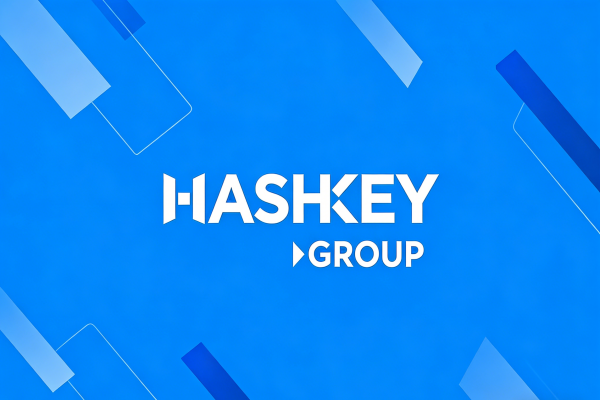Deciphering the cost of acquiring customers for encrypted products: How valuable are encrypted users?

Cost per Wallet is tied to market cycles, geography, and campaign execution.
About a month ago, I published an article about Cost Per Wallet (CPW). This Web3-specific growth metric measures the cost of acquiring a website visitor who has a wallet installed on their browser.
The article was extremely well received. Marketers, advertising agencies, and project founders joined the discussion to share their thoughts, challenges, and data points. One thing was clear: CPW touched a nerve. Among the many private messages and replies, one question stood out:
Tell me about cost, what is it like at a specific time, in a specific region, on a specific platform? Does success or failure change the way cost is calculated?
This article will answer this question with detailed data. I analyzed more than 200 programmatic campaigns launched by more than 70 advertisers on the Addressable platform in 2024, targeting more than 1.5 million users worldwide, to study CPW under different market cycles, regions, campaign executions, and audience segments.
CPW Trends in 2024: How do market cycles affect costs?
Bull-Bear Cycles: 2024 saw two distinct market cycles. The market started the year strong, with a bull market in the first quarter, and the total cryptocurrency market value increased by 21% month-on-month to $1.7 trillion. But the momentum reversed in the second quarter, with a 12% month-on-month decline, and the situation deteriorated further in the third quarter, with the market falling 27% month-on-month. However, in the fourth quarter, the market rebounded strongly, with a month-on-month increase of 109%, entering another bull market phase. These market changes naturally affected CPW, but the impact was not uniform.
The fluctuations of CPW in different market cycles reveal more than just the expected pattern of low costs in bull markets and high costs in bear markets. It also highlights the sensitivity of different regions to market volatility, the importance of timing, and the strategic advantages of targeting resilient markets.
Developed Markets: Developed markets like the US and Western Europe tend to offer more predictable CPW during bullish phases, but are also very resilient. In the first quarter, US CPW remained flat at $5.87, but as sentiment shifted in the third quarter, costs surged nearly 4x to $22.81. Western Europe showed a similar pattern with more dramatic volatility, surging 27x from $1.18 to $32.79. While these markets offer scale and quality during bullish periods, costs increase significantly when sentiment turns bearish, making them less sustainable during market downturns.
Emerging Markets: Present a different risk-reward profile. In favorable conditions, they offer very low CPW, but cost volatility can be extremely volatile. For example, CPW in Latin America dropped to a near-free $0.56 in Q1, but by Q3 costs had skyrocketed 60x to $34.38, reflecting sudden liquidity constraints and demand changes there. Eastern Europe saw an even more dramatic increase, with CPW surging 99x from $0.21 to $20.79, demonstrating that costs can rise dramatically when market conditions deteriorate.
Southeast Asia: The most robust region across market cycles, with CPWs fluctuating within a 5x range, from $3.73 in Q1 to $16.61 in Q3. This stability suggests that local market factors, adoption curves, or advertiser demand may create a more predictable environment, making it an attractive region for brands looking to keep costs stable across macro conditions, especially for programs that want to test product usage without being affected by market cycles.
The key takeaway is that market cycles not only impact CPW, but also determine when and where it is practical to attract wallet holders. While developed regions are highly efficient in bull markets, they are expensive in down markets. Emerging markets are ultra-low-cost but come with extreme volatility. Southeast Asia, with its relative stability, may offer the best long-term potential for brands looking to mitigate risk across market cycles.
CPW of the best and worst performing campaigns
Market cycles aren’t the only factor. The best performing campaigns consistently maintain low CPW, even during down markets. In fact, the top 25% of campaigns have an impressive CPA of just $6-8 per wallet, even during bear cycles. Meanwhile, the CPW of the worst performing campaigns ranges between $4.68 and $44.79.
This performance gap can be attributed to product-market fit (PMF), community strength, market heat, incentives, and creative execution. Campaigns that have strong audience fit and optimized messaging can maintain affordable CPW regardless of market conditions.
For campaigns struggling with high CPW, relocating to lower-cost regions is not the only solution. Optimizing targeting, messaging, incentives, and creative strategies can improve efficiency and keep CPW stable in any market.
CPW by audience
Decentralized Finance (DeFi)/CeFi campaigns are the most cost-effective, with a median CPW of $2.79 and a bottom quartile of just $0.10. L1/L2 projects are close behind, with a median CPW of $3.23, reflecting their high adoption rates.
Gaming and gambling campaigns are the most expensive, with a median CPW of $8.74 and a bottom quartile of $3.40, perhaps due to high churn, frequent speculation, and fierce competition. If Web3 games are truly unstoppable, we need to find a more powerful user acquisition engine to make them as sustainable as Web2 games.
Conclusion: CPW as a Web3 Growth Framework
CPW is not determined solely by market cycles, it is also influenced by how well a campaign executes. The top 25% of campaigns maintain CPW of $6-8 throughout the year, even during market downturns, while the CPW of the bottom performing campaigns fluctuates wildly from $4.68 to $44.79. This proves that market conditions are no excuse, and that marketing teams that track data, optimize targeting, and iterate on messaging and incentives can outperform market cycles; maintaining efficient costs regardless of macro trends.
This also prompted us to shift our strategy when launching products. Targeting large investors in the US during a bear market would have been an extremely expensive gamble, and CPW would have reached unsustainable levels. Instead, starting with more stable, cost-effective regions like Southeast Asia allows brands to optimize their product-market fit before expanding into developed markets. Teams that don’t take this approach risk burning through their budgets prematurely, before proving market demand and optimizing conversion rates.
Finally, these data from ad-driven marketing campaigns challenge the myth that Web3 advertising doesn’t work. In fact, these results show that ad-driven Web3 growth is measurable, scalable, and not a dead end.










